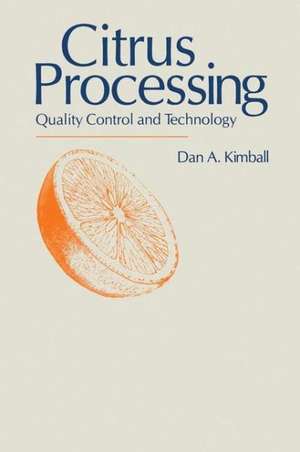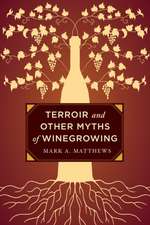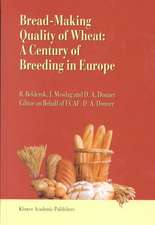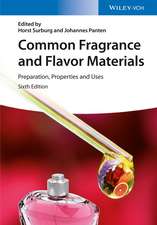Citrus Processing: Quality Control and Technology
Editat de Dan A. Kimballen Limba Engleză Paperback – 5 noi 2012
| Toate formatele și edițiile | Preț | Express |
|---|---|---|
| Paperback (1) | 397.59 lei 6-8 săpt. | |
| SPRINGER NETHERLANDS – 5 noi 2012 | 397.59 lei 6-8 săpt. | |
| Hardback (1) | 1397.64 lei 6-8 săpt. | |
| Springer Us – 30 iun 1999 | 1397.64 lei 6-8 săpt. |
Preț: 397.59 lei
Nou
Puncte Express: 596
Preț estimativ în valută:
76.08€ • 79.43$ • 62.96£
76.08€ • 79.43$ • 62.96£
Carte tipărită la comandă
Livrare economică 04-18 aprilie
Preluare comenzi: 021 569.72.76
Specificații
ISBN-13: 9789401056458
ISBN-10: 9401056455
Pagini: 484
Ilustrații: VI, 473 p.
Dimensiuni: 152 x 229 x 25 mm
Greutate: 0.64 kg
Ediția:Softcover reprint of the original 1st ed. 1991
Editura: SPRINGER NETHERLANDS
Colecția Springer
Locul publicării:Dordrecht, Netherlands
ISBN-10: 9401056455
Pagini: 484
Ilustrații: VI, 473 p.
Dimensiuni: 152 x 229 x 25 mm
Greutate: 0.64 kg
Ediția:Softcover reprint of the original 1st ed. 1991
Editura: SPRINGER NETHERLANDS
Colecția Springer
Locul publicării:Dordrecht, Netherlands
Public țintă
ResearchCuprins
1 Introduction.- Unit 1 Citrus Juice Characteristics.- 2 Brix and Soluble Solids.- 3 Acids in Citrus Juices.- 4 The Brix/Acid Ratio.- 5 Testing of Fruit Samples.- 6 Citrus Oils, Aromas, and Essences.- 7 Citrus Juice Pulp.- 8 Juice Cloud.- 9 Color of Citrus Juices.- 10 Bitterness in Citrus Juices.- 11 Nutritional Content of Citrus Juices.- 12 Citrus Rheology.- 13 Citrus Processing Varieties.- Unit 2 Citrus Juice Sanitation.- 14 Inspections.- 15 Citrus Microbiology.- 16 Insects, Rodents, and Birds.- 17 Physical and Chemical Contamination.- 18 Processing Contamination.- 19 Juice Adulteration.- Unit 3 Citrus Juice By-Products.- 20 Food-Grade Nonjuice Products.- 21 Animal Feed and Fuel By-Products.- 22 Wastes from Citrus Plants.- Unit 4 Citrus Juice Management.- 23 Quality Control Statistics.- 24 Quality Control Management.- 25 Inventory Management.- Appendix A Acid Corrections to the Brix.- Appendix B GWBASIC and RPG Programs.- Appendix C HP-41C Programmable Calculator Programs.- Appendix D Answers to Select Questions and Problems.
Descriere
Descriere de la o altă ediție sau format:
Citrus juices are the most common among the fruit juices around the world and constitute a major portion of the food industry. Even though juice-processing technology has been around for many years, interest in historical and modem in novations and applications is widespread. New juice enterprises are springing up constantly all over the world. Old enterprises are constantly undergoing change, growth, and development. The Internet has expanded the reach of many, not only for information but for marketing and production alterations. The World Wide Web has made the wide world one. Computer technology alone is growing faster than the oranges on the trees. With these multifaceted changes, a need has emerged for an update to the first edition of Citrus Processing. The second edition of Citrus Processing has expanded its scope beyond the quality control theme of the first edition. I have used a more holistic approach to the subject of citrus processing. Those using this text in the classroom will find it more comprehensive in its treatment of the subject. The first edition targeted the industrial technologist. The second edition approaches citrus processing as a complete subject, assuming an audience interested in learning from the ground up. This new approach should be particularly appealing to those unfamiliar with the industry. Even so, experienced industrialists will find the information con tained here contemporary, futuristic, and fundamental.
Citrus juices are the most common among the fruit juices around the world and constitute a major portion of the food industry. Even though juice-processing technology has been around for many years, interest in historical and modem in novations and applications is widespread. New juice enterprises are springing up constantly all over the world. Old enterprises are constantly undergoing change, growth, and development. The Internet has expanded the reach of many, not only for information but for marketing and production alterations. The World Wide Web has made the wide world one. Computer technology alone is growing faster than the oranges on the trees. With these multifaceted changes, a need has emerged for an update to the first edition of Citrus Processing. The second edition of Citrus Processing has expanded its scope beyond the quality control theme of the first edition. I have used a more holistic approach to the subject of citrus processing. Those using this text in the classroom will find it more comprehensive in its treatment of the subject. The first edition targeted the industrial technologist. The second edition approaches citrus processing as a complete subject, assuming an audience interested in learning from the ground up. This new approach should be particularly appealing to those unfamiliar with the industry. Even so, experienced industrialists will find the information con tained here contemporary, futuristic, and fundamental.


















